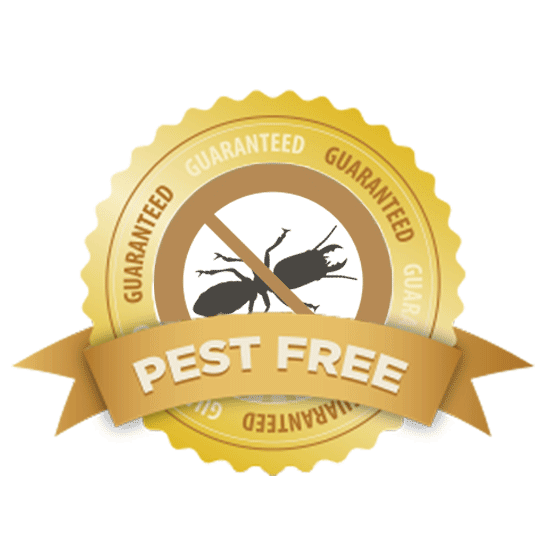A1 Bed Bug Exterminator Charlotte - Specialized Bed Bug Elimination
Wiki Article
Bed Bug Therapy Malfunction: Comparing Chemical Vs. Non-Chemical Solutions
In the world of parasite control, particularly when handling the relentless problem of bed bugs, the option between chemical and non-chemical treatment services can be a pivotal one. Both strategies offer distinctive advantages and downsides, influencing variables such as efficiency, security factors to consider, and general cost. By checking out the nuanced information of each approach, a clearer understanding of which path to seek in attending to a bed bug problem can be obtained.Effectiveness of Chemical Therapies
Chemical treatments for bed pest infestations have actually been extensively acknowledged for their powerful and fast efficiency in getting rid of these pests. When taking into consideration the effectiveness of chemical treatments, it is essential to comprehend that they can give a extensive and fast solution to a bed bug trouble. Specialist exterminators commonly depend on pesticides to target bed pests at various stages of their life cycle, consisting of fairies, eggs, and grownups. These chemicals typically work by disrupting the bed bugs' anxious system, causing paralysis and eventual death.Furthermore, chemical treatments have the advantage of providing residual effects, implying that they can remain to remove bed pests even after the preliminary application. This recurring activity is specifically useful in combating any type of potential re-infestations. Additionally, the rapid action of chemical treatments can bring relief to individuals facing severe bed insect infestations, allowing them to gain back control of their living rooms promptly.
Safety And Security Worry About Chemical Solutions
One vital facet that calls for mindful factor to consider when making use of chemical remedies for bed pest treatment is guaranteeing the safety and security of occupants and the setting. Direct exposure to certain chemicals used in bed insect treatments can lead to respiratory problems, skin irritability, or various other negative reactions, particularly in individuals with pre-existing problems or level of sensitivities.Furthermore, the environmental impact of chemical services is another significant consideration. Some chemicals utilized in bed bug therapies might be harmful to valuable pests, wildlife, and communities if they leach into the dirt or water supply. It is necessary to utilize chemical therapies deliberately, complying with safety guidelines, and considering less toxic choices to alleviate these risks and ensure the efficient and safe administration of bed bug invasions.
Advantages of Non-Chemical Approaches
Taking into consideration the prospective safety and security worries and environmental influence related to chemical solutions for bed insect treatment, checking out non-chemical approaches offers an appealing choice with a number of unique advantages. Non-chemical techniques use a safer option for houses, especially those with kids, pet dogs, or people sensitive to rough chemicals. These approaches remove the risks of direct exposure to harmful materials, minimizing the potential for adverse wellness impacts. Additionally, non-chemical therapies are eco-friendly, as they do not add to air or water air pollution, making them a lasting selection for parasite control.Additionally, non-chemical services can be efficient in targeting bed insects, including hard-to-reach areas where chemical therapies might not pass through. Approaches such as warmth therapy, vacuuming, steam cleaning, and mattress encasements offer thorough elimination without using damaging chemicals. Additionally, non-chemical techniques can be less disruptive, needing minimal prep work and permitting quicker reentry into treated areas. Overall, opting for non-chemical bed bug treatment techniques not only focuses on security and ecological security however additionally makes certain reliable and detailed parasite control.
Limitations of Non-Chemical Treatments

In addition, non-chemical treatments frequently need several applications to achieve effective removal. This can be time-consuming and might not always guarantee complete removal of all bed bugs and their eggs, specifically in covert or hard-to-reach locations.
Moreover, the success of non-chemical therapies greatly relies upon appropriate application and thoroughness, which can be challenging for people without professional knowledge. Poor application of non-chemical techniques may result in incomplete eradication, bring about persistent problems and the requirement for added treatments.
Consequently, while non-chemical treatments have their benefits, it is vital to recognize these limitations and consider them when establishing the most reliable approach for handling bed pest invasions.
Expense Contrast: Chemical Vs. Non-Chemical Options
Given the restrictions connected with non-chemical treatments, an essential element to examine in the context of bed pest management is the price comparison between chemical and non-chemical choices. Chemical therapies normally entail the application of insecticides by experts, which can vary from $250 to $900 per area, depending on the seriousness of the invasion and the size of the location to be treated. In contrast, non-chemical treatments like warm therapy or steam can be extra expensive, with expenses ranging from $1,000 to $6,000 for a whole home. While the first price of chemical treatments may seem lower, multiple treatments may be needed to fully get rid of the infestation, possibly boosting the overall cost. On the other hand, non-chemical alternatives might provide a much more green and lasting remedy, although they can be cost-prohibitive for some people. Inevitably, when thinking about the cost of bed bug treatment alternatives, it is essential to consider the upfront expenditures versus the efficiency and long-term sustainability of the chosen approach.Conclusion

Taking into consideration the prospective security issues and ecological effect associated with chemical remedies for bed insect treatment, discovering non-chemical techniques presents an encouraging option with numerous unique advantages.Offered the restrictions linked with non-chemical therapies, a crucial element to evaluate in the context of bed pest administration is the price contrast in between chemical and non-chemical choices. In comparison, non-chemical therapies like warmth treatment or vapor can be more costly, with costs varying from $1,000 to $6,000 for an entire home. While the initial expense of chemical therapies may appear lower, multiple treatments might be called for to completely eradicate the invasion, possibly enhancing the total cost.In verdict, when contrasting chemical and non-chemical bed bug therapy alternatives, it is important to take into consideration efficiency, security, advantages, limitations, and expense.
Report this wiki page